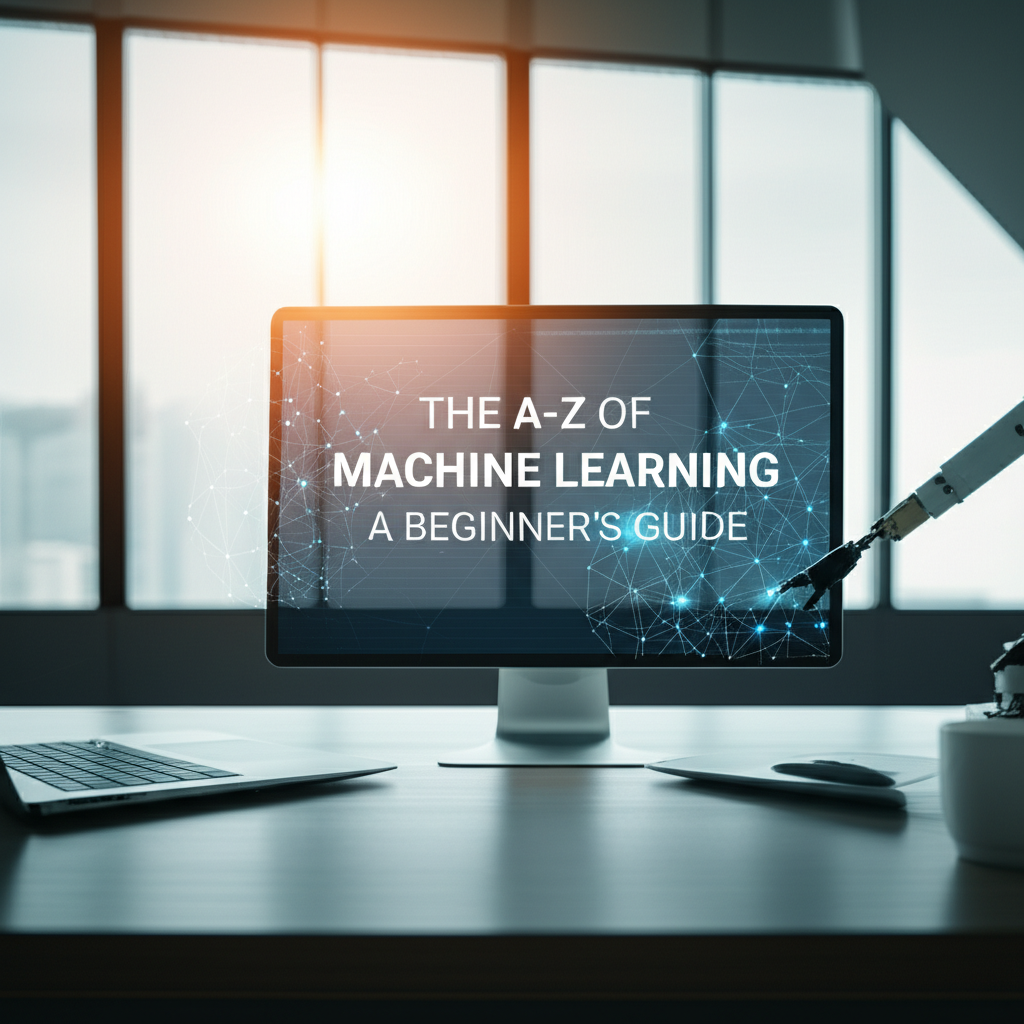Let’s be honest: getting a new drug to market is a herculean task. We’re talking billions of dollars, a decade or more of grueling research, and a staggering failure rate that tops 90%. For too long, this slow, expensive, and linear slog has been a massive bottleneck in medicine, leaving countless people waiting for effective treatments. But it feels like we’re on the verge of a genuine breakthrough, powered by artificial intelligence that can finally make sense of biological complexity at a scale and speed we could only dream of before. The promise? To shrink drug discovery timelines from years down to mere months.
In this piece, I want to walk through how AI is shaking up the entire drug discovery pipeline, from the very first spark of an idea to designing smarter, more effective clinical trials. We’ll get into how specific AI technologies are lowering the insane risks of development, uncovering brand-new ways to fight disease, and making personalized medicine a reality. For anyone in this field—whether you’re a researcher, an investor, or leading a team—getting a handle on this revolution isn’t just a good idea anymore. It’s absolutely essential for staying relevant in a future where the speed of a computer could directly translate to the pace of healing.
The Foundational Shift: From Manual Screening to AI-Driven Insights
The High Cost of Traditional Discovery
The old way of finding drugs has always felt a bit like a brute-force attack. It’s a method called high-throughput screening, where scientists painstakingly test thousands, sometimes millions, of chemical compounds against a biological target—say, a specific protein that’s gone rogue in a disease—just hoping for a lucky break. It’s not just resource-intensive; it’s profoundly inefficient. I always picture it as trying to find the one key that opens a specific lock by randomly trying every single key from a massive, jumbled-up bucket.
This trial-and-error approach is exactly why everything costs so much and takes so long. Each stage of the process is a funnel. You have to pour a colossal number of potential candidates in at the top just to get one single drug that proves both safe and effective in humans at the bottom. The cost of all those failures gets baked into the price of the rare success, creating a system that just can’t keep up with what patients actually need.
AI’s Predictive Power: A New Paradigm
This is where AI flips the script entirely. Instead of just blindly screening compounds, AI algorithms use intelligent prediction. They analyze these enormous, complex datasets—genomics, proteomics, existing drug libraries—to spot patterns that are completely invisible to the human eye. The system starts to learn the intricate biological rules of how molecules and cells interact, which means it can actually predict which compounds are most likely to work before a chemist even makes them in a lab.
This predictive muscle turns the whole process from a game of chance into a targeted, data-driven strategy. AI can whip through virtual libraries of billions of molecules in a flash, creating a shortlist of only the most promising candidates for real-world testing. It’s not just about speeding up that initial discovery phase; it dramatically increases the odds of success down the line, saving precious time and money and letting scientists focus on what really matters.
AI in Action: Identifying Targets and Designing Molecules
Genomic and Proteomic Target Identification
The very first step in making a new drug is figuring out what to aim for—the specific gene or protein that’s causing the problem. AI is a natural at this. It can sift through mountains of biological data to pinpoint these culprits. Machine learning models can analyze the genomes of thousands of patients, connecting the dots between certain genetic mutations and a disease, often uncovering novel targets that researchers had either missed or never even knew existed.
It’s the same story in proteomics, the study of proteins that do all the heavy lifting in our cells. By modeling the complex web of how proteins interact and how a disease messes up that network, AI can identify the most critical weak points to hit for the biggest therapeutic impact. This helps us move beyond the obvious targets to find more subtle, and potentially far more effective, ways to intervene.
Generative AI for Novel Drug Design
Okay, so you’ve found your target. Now what? The next challenge is designing a molecule that can actually hit it effectively. This is where generative AI is, frankly, mind-blowing. In the same way AI can create a new image or a piece of text, generative chemistry platforms can design completely novel molecules from scratch. They can be built and optimized for specific properties we need, like being highly potent, having low toxicity, or being easy to manufacture. The AI essentially learns the “language” of chemistry to construct viable drug candidates.
This whole design process happens *in-silico* (on a computer), letting scientists create and test thousands of potential drug structures virtually—something that would be physically impossible to do in a lab. Companies like Insilico Medicine have already shown what’s possible here, taking a new drug from an AI-driven idea to its first human clinical trial in less than 30 months. That’s a tiny fraction of the industry average. It’s a real game-changer.
Accelerating Preclinical Research and Predicting Efficacy
Predicting Drug Toxicity and Side Effects
One of the biggest heartbreaks in drug development is when a compound that looks incredibly promising fails late in the game because it turns out to be toxic. AI is helping us avoid this nightmare by predicting a molecule’s potential toxicity much earlier in the process. By training on historical data from countless failed and successful drugs, AI learns to spot the chemical red flags associated with things like liver damage or heart problems.
These predictive toxicology models act as a critical safety filter. They can flag potentially dangerous candidates before anyone invests serious time or money into them. This gives researchers a choice: either tweak the molecule to make it safer or just drop it and move on to better alternatives. It drastically improves the quality of drugs that even make it to preclinical testing.
Optimizing Preclinical Study Design
Beyond spotting danger, AI also helps us design smarter, more efficient preclinical studies. Machine learning algorithms can analyze existing biological data to create “digital disease models”—simulations of how a disease actually works in a living system. Researchers can then test their virtual compounds on these digital models to get a better idea of their effectiveness and the right dosage, refining their theories before ever starting live animal studies.
This data-first approach means we can reduce our reliance on animal testing—which is a huge ethical win—while also making the research more focused. By making sure only the most viable drugs with the highest chance of success move into this expensive phase, AI is streamlining the entire preclinical pipeline and building a much stronger case for moving on to human trials.
When we talk about this foundational shift, there are a few things that are absolutely crucial to get right:
- Smarter Screening, Not Harder: Ditch the brute-force approach. Use AI to triage and rank potential targets and compounds by their predicted success, so you’re not wasting time and money on dead ends.
- Get Your Data House in Order: All your data—biochemical, omics, structural—needs to be unified and clean. That means fixing inconsistencies, filling in metadata gaps, and making sure everything speaks the same language.
- Let Computers Do the First Pass: Use predictive and generative models to screen compounds virtually. Prioritize the ones that already look good on paper for potency, safety, and selectivity before you even step into the lab.
- Create a Smart Feedback Loop: Don’t just run tests. Run the *right* tests. Use active learning where the AI tells you which experiments will give you the most valuable information, then feed those results back to make the model even smarter.
- Measure What Matters and Keep Humans in Charge: Track the right metrics—how much better your hit rate is, how much faster you find candidates. But always, always have human experts at key decision points to ensure the AI’s suggestions make real-world sense.
Revolutionizing Clinical Trials and Patient Stratification
AI-Powered Patient Recruitment
Anyone who has run a clinical trial will tell you that one of the biggest headaches is just finding the right patients. It’s a process that can delay life-saving research by months, even years. AI is a massive help here. It can scan millions of electronic health records (EHRs), lab results, and doctors’ notes in the blink of an eye to find ideal candidates who fit complex eligibility criteria. It automates a painfully manual task and speeds up recruitment like nothing else.
A specific kind of AI, natural language processing (NLP), is the real hero here. It can actually understand the nuances of unstructured text, like a physician’s notes, to pull out relevant patient details that a simple keyword search would totally miss. This means you get a much better match between patients and trials, which leads to higher-quality data and, ultimately, faster results.
Personalized Medicine and Biomarker Discovery
This is the holy grail, right? Medicine tailored specifically to your unique genetic and biological makeup. AI is the engine making this happen. Machine learning models can analyze patient data from trials to find subtle biomarkers—like a specific genetic mutation or protein level—that predict who will respond to a drug and who won’t. This is what we call patient stratification.
By identifying these biomarkers, pharma companies can design much smarter clinical trials that only include the patients most likely to benefit. Not only does this skyrocket the trial’s chance of success, but it also paves the way for companion diagnostics. These are tests that doctors can use to identify which patients should get a specific therapy, making sure the right drug gets to the right person at the right time.
Navigating the Challenges of AI Implementation in Pharma
Data Quality, Privacy, and Integration
Okay, so this all sounds incredible, but it’s not magic. An AI system is only as good as the data you train it on. In the pharmaceutical world, data is often a mess—stuck in different formats, spread across different institutions, and hard to pull together. If you feed an AI inconsistent, incomplete, or biased data, you’ll get flawed models and unreliable predictions. Building a solid data governance strategy is step one, and it’s non-negotiable.
On top of that, a lot of this data is incredibly sensitive patient information, which brings up huge privacy and security concerns. You have to figure out how to build these AI systems while following strict regulations like HIPAA. It requires some pretty sophisticated tricks, like federated learning, where models are trained on local data without that raw data ever having to leave its secure source. Balancing open access for research with ironclad patient privacy is a tightrope the whole industry is learning to walk.
The “Black Box” Problem and Regulatory Hurdles
There’s also a trust issue. A lot of the most powerful AI models, especially deep learning networks, can work like “black boxes.” They can give you a stunningly accurate prediction, but they can’t always tell you *how* they got there. This is a huge problem for regulatory bodies like the FDA, who need to understand exactly why a drug was developed and how it works. You can’t just show up and say, “The computer said this molecule would work.” You have to be able to show your work.
To solve this, a field called explainable AI (XAI) is quickly growing. The whole point of XAI is to build models that can articulate the reasoning behind their decisions, giving us the scientific validation and transparency we need for regulatory approval. Bridging that gap between incredible predictive power and clear, scientific interpretability is absolutely key for building trust and getting AI-discovered drugs to patients.
The Future Horizon: Autonomous Labs and Quantum Computing
Closed-Loop Systems and Self-Driving Labs
The next frontier, and this is where it gets really sci-fi, is the idea of fully autonomous, “closed-loop” laboratories. In this vision, an AI system doesn’t just design experiments and predict what will happen; it actually directs robotic hardware to physically run those experiments. The results are then instantly fed back to the AI, which learns from the new data and designs the next set of experiments, all in a continuous, self-improving cycle.
These “self-driving” labs could operate 24/7, running thousands of experiments with a speed and precision humans could never match. This isn’t just about making things faster; it’s about accelerating the scientific method itself. We’re talking about going from a hypothesis to a validated discovery in a fraction of the time. It’s the ultimate combination of AI, robotics, and biology, and I think it’s poised to become the new gold standard for R&D.
Quantum AI’s Potential in Molecular Simulation
And if we really want to look over the horizon, we have to talk about quantum computing. As powerful as our current computers are, they’re not great at accurately simulating the incredibly complex quantum mechanics that rule how molecules interact. That’s a huge limitation because understanding those interactions is everything in drug design. Quantum computers, on the other hand, speak the same language as molecules, offering the potential to model them with perfect accuracy.
Combine that with AI, and you have something revolutionary. An AI could propose a new molecule, and a quantum computer could instantly and accurately simulate how it would behave inside the human body. This synergy would take so much of the guesswork out of drug development, letting scientists design nearly “perfect” drugs on a computer with a high degree of confidence before they ever pick up a test tube.
Conclusion
So, no, artificial intelligence isn’t just another incremental tool in the toolbox; it’s a fundamental rewiring of the entire engine of drug discovery. By shifting the process from one of manual labor and pure luck to one of predictive, data-driven science, AI is crushing timelines, slashing failure rates, and uncovering new therapies that were once hidden in the sheer complexity of our own biology. We’re finally moving from a world where discovery is limited by human capacity to one where it’s supercharged by computation. This shift promises a future where medicines are more personal, more effective, and developed at a pace we’ve never seen before.
Of course, the road ahead means bringing together pharmaceutical experts, data scientists, and regulators to solve the tough challenges around data quality and model transparency. But for any leader or innovator in this space, the question is no longer *if* AI will reshape medicine. The real question is *how* you plan to harness its power to drive the next wave of life-saving breakthroughs. What’s your first move to get ready for a future where the next blockbuster drug might just be born from an algorithm?

FAQs
So how exactly does AI actually save time and money in the early stages?
Think of it this way: AI replaces the old ‘needle in a haystack’ approach with a powerful magnet. Instead of blindly testing millions of compounds, AI models analyze all the available data—genetics, proteins, chemical libraries—to predict which targets and molecules have the best shot at working. This means labs test far fewer candidates, but the ones they do test are much higher quality. Plus, generative AI can design brand-new molecules on a computer that are already optimized for things like potency and safety. This predictive power prunes out risky ideas early, so you spend less time and money on experiments destined to fail. The result? Months are shaved off timelines, and huge savings are made on lab materials and wasted effort, all while boosting the odds that a drug will actually succeed down the line.
What are the first steps a pharma team should take to build a good data foundation for AI?
Honestly, it starts with a data audit. You have to know what you have across all your silos—chemistry, biology, clinical data, you name it. The next step is to get it all cleaned up and speaking the same language, following FAIR data principles. That means fixing errors, filling in missing information, and standardizing everything. You’ll need a secure, well-governed place to store it all, with clear rules about access and privacy. And you can’t forget the human element. You need to train your teams and build small, cross-functional squads with biologists, chemists, and data scientists who can work together to make sure the data is not just clean, but actually useful for answering real scientific questions.
How can AI predict if a drug will be safe and effective before it even gets to human trials?
It’s all about learning from the past. AI models for predictive toxicology are trained on vast amounts of data from drugs that have both succeeded and failed. This teaches them to recognize the chemical red flags associated with common toxicities, like liver or heart damage. They can spot these warning signs incredibly early. At the same time, other AI models create “digital” versions of diseases, allowing researchers to simulate how a drug might work in the body. They can run virtual experiments to find the best dose and predict effectiveness. This two-pronged approach—spotting danger early and simulating success—means the compounds that do move forward into expensive preclinical and clinical studies have a much, much higher chance of actually working.

For clinical trials, how does AI speed up finding patients and creating personalized treatments?
Patient recruitment is a notorious bottleneck, and AI tackles it head-on. It can scan millions of health records, lab reports, and even doctors’ notes in minutes to find patients who perfectly match a trial’s complex criteria. This drastically cuts down on screening time. For personalization, AI is a powerhouse. It can analyze trial data to uncover hidden biomarkers—like a genetic signature—that predict who will benefit most from a therapy. This allows companies to design “enriched” trials with only those likely responders, which means you need fewer participants and can get answers faster. These biomarkers can then become diagnostic tests, ensuring that once the drug is approved, it gets to the exact patients it’s meant to help.
What are the biggest risks and regulatory issues to watch out for when using AI in drug discovery?
The biggest risks are all about trust and transparency. Bad or biased data can lead to bad or biased results. And if an AI model is a “black box,” you can’t explain its reasoning, which is a non-starter for regulators. The solution is to prioritize explainable AI (XAI) and keep meticulous records. You need a human-in-the-loop at all critical decision points. From a regulatory standpoint, you have to document everything: where your data came from, how your model was built and validated, and why you believe its outputs. It’s also crucial to protect patient privacy every step of the way. The key is to be proactive and transparent. Engaging with regulators early and showing them a clear, traceable path from AI insight to biological reality is the best way to de-risk the process and build trust.










